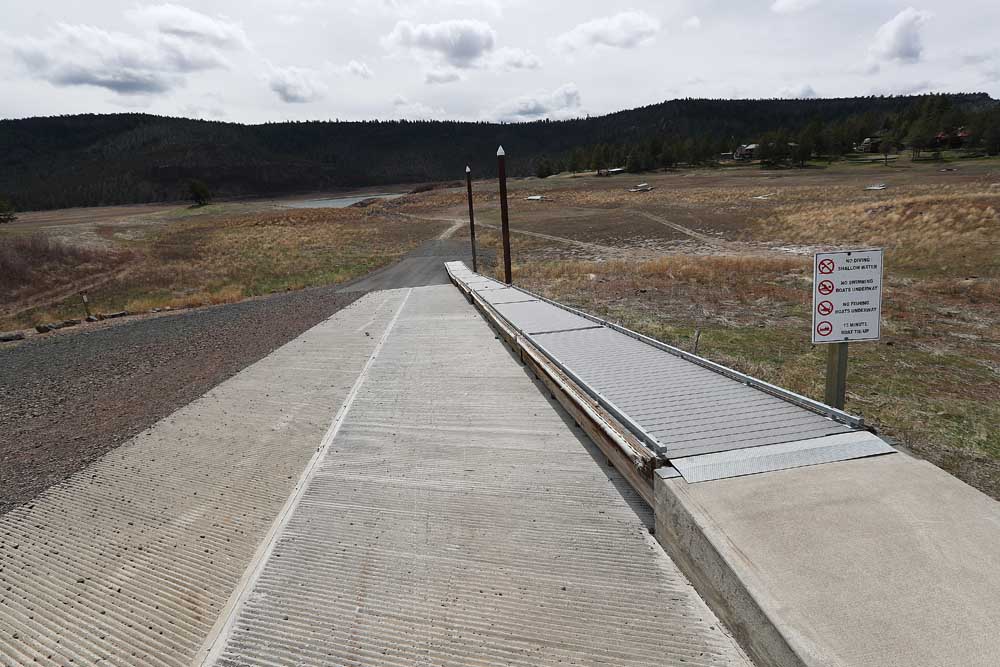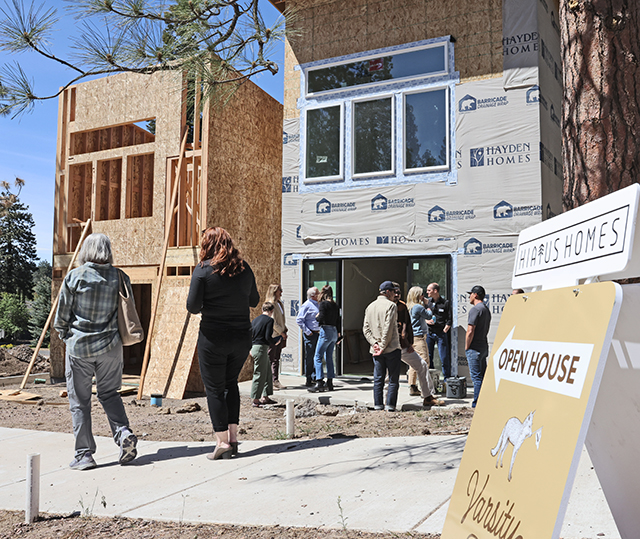Four Central Oregon reservoirs at record low levels
Published 8:00 am Thursday, March 31, 2022

- Dry ground surrounds the area around a boat launch at Ochoco Reservoir in Prineville on Wednesday. As of Sunday, the reservoir was 11% full.
As the irrigation season gets underway next month, water authorities are taking stock of Central Oregon’s reservoirs, and the reports coming back are worrying. Four of the five large reservoirs are at their lowest levels ever.
“I would like to report some good news, but it is hard to find any,” said Jeremy Giffin, Deschutes Basin watermaster.
The reservoirs in question include Wickiup, Prineville, Crescent Lake and Ochoco. The fifth, Craine Prairie, is higher than past low levels due to federal requirements to protect the Oregon spotted frog.
Natural flow in the Deschutes Basin was classified as extremely low last year, but now rivers and streams are down an additional 15% from a year ago, said Giffin, whose job duties include regulating and distributing the waters of the state and enforcing water law.
River and stream levels are not expected to rise substantially this spring because of low snowpack in the Cascades. The low stream and reservoir levels will once again mean tight water allotments for irrigation districts, as well as calls for people to cut their water use at home.
“The vast majority of city water that is delivered in the spring, summer and fall goes to outdoor landscaping, so that is really a great place to make adjustments to water usage,” said Giffin.
The Oregon Water Resources Department has advice for Central Oregonians who want to reduce their water use and help alleviate stress on the environment caused by the drought. Everyday lifestyle modifications can be considered, including shorter showers, using less water when washing dishes and clothes, avoiding hosing off driveways and decreasing the amount of water put on lawns.
Irrigation district patrons can save water by investing in more efficient sprinkler systems, or by leasing their water right instream.
“There is no reason to waste water. If you can conserve water and make that your mission, everyone should do that,” said Kyle Gorman, region manager for the Oregon Water Resources Department.
As of Wednesday, Wickiup Reservoir was 55% full, a 5% decline from a year ago and a 42% decline from average, according to data from the U.S. Bureau of Reclamation website. Prineville Reservoir was 26% full, a 49% decline from a year ago and a 70% decline from average.
Ochoco has been this area’s worst-performing reservoir. As of Sunday, it was just 11% full, a 52% decline from a year ago and an 83% decline from its average height at this point in the year.
Municipal water use is just a small fraction of the water used by irrigation districts in Central Oregon so there is also water that can be saved on larger properties in outlying areas.
“If anybody in any of the (irrigation) districts has thought about not using their water, this would be the year to either not use it or to lease it instream, if available, through the district administration process,” said Gorman.
The drought is causing financial losses in agricultural areas due to water allotment cuts, which forces farmers to leave large portions of their farms fallow. Last year, farmers in the North Unit Irrigation District, which holds junior water rights, were routinely fallowing half their acres in order to plant at least a partial crop. The situation this year looks just as bad as in past years.
“We anticipate that irrigation districts will run out of water again this year. We also anticipate extremely low flows in the rivers,” said Gorman.
Historically, the picture is equally bleak. The drought conditions are the worst on record, going back 127 years, according to data compiled by Oregon State University.
“The drought indicators in Central Oregon uniformly show the current drought is by far the worst in recorded history,” said Larry O’Neill, associate professor at OSU’s College of Earth, Ocean and Atmospheric Sciences. “It, unfortunately, looks to continue throughout this summer.”
O’Neill said climate models suggest cooler and drier than normal weather for April, with the weather in May to July showing dry and warm conditions.
On top of the record-low reservoir levels, snowpack is well-below average for the year. Snowpack seeps into underground aquifers in spring and is a good indicator of how high reservoirs will reach the following year.
Below average snowpack this year could result in even lower reservoir levels in 2023. As of Wednesday, snowpack in the Central Oregon Cascades was just 54% of normal and precipitation for the year stood at 81% of normal.
“Very disappointed and discouraged,” said Gorman, when asked about this year’s snowpack. “I was hoping for a much better winter this year, a recovery. But we just didn’t get it. Our snowpack is way below average.”






